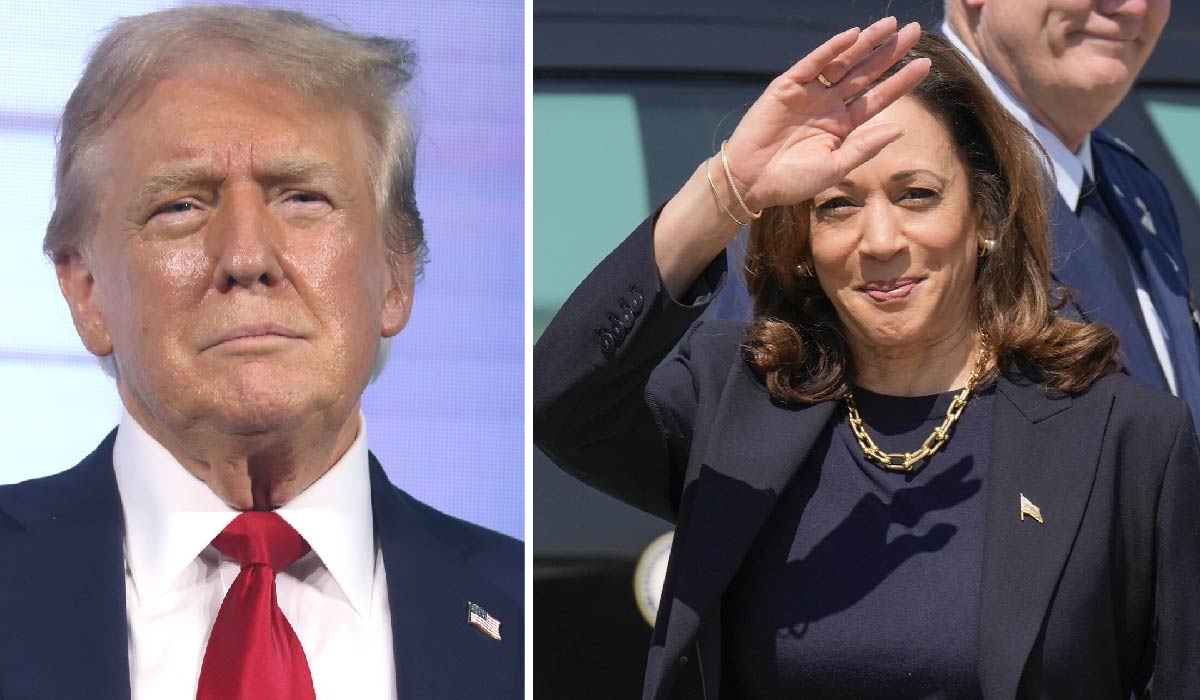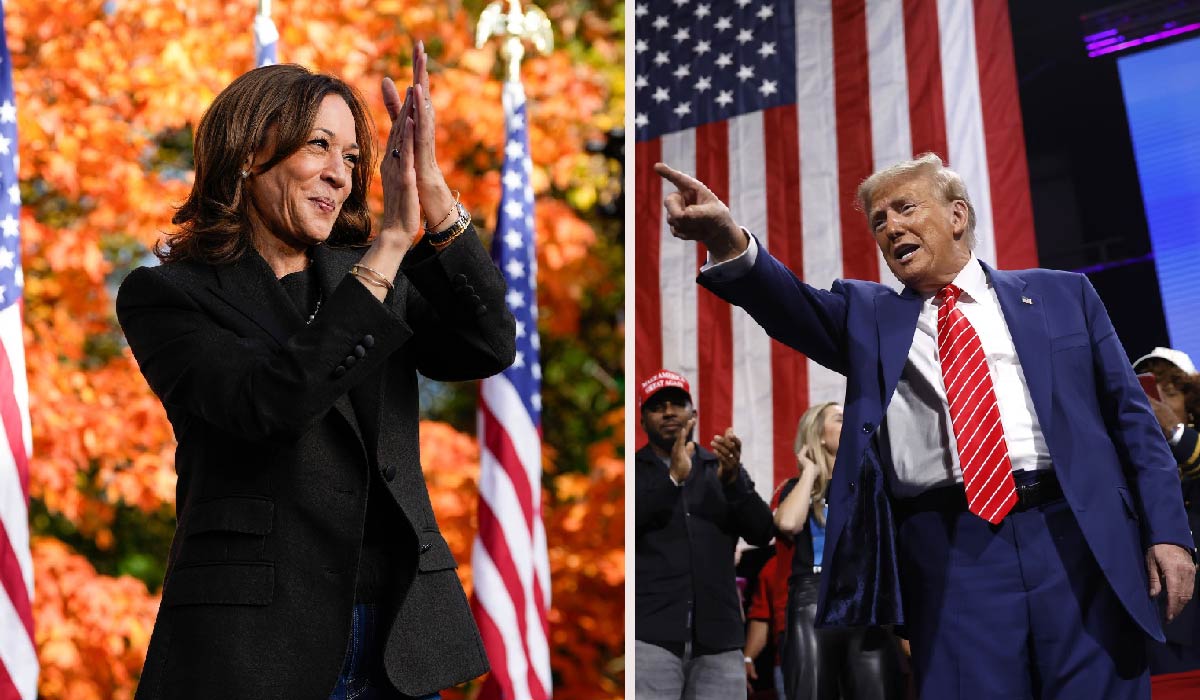In a significant political shift, recent Iowa Polls have shown Vice President Kamala Harris overtaking former President Donald Trump in a state that has been a stronghold for Republicans in past presidential elections. This article delves deep into the dynamics of the Iowa polls, offering a comprehensive analysis of what has led to this surprising turnaround. With the election just around the corner, understanding the sentiments of Iowa voters gives us critical insights into potential outcomes that could shape the national political landscape.
Historical Overview of Lowa Polls

Traditionally, Iowa has been a critical battleground state, its early caucus serving as a bellwether for gauging national election trends. Historically, the Iowa Polls have been a reliable predictor of the state’s election results. Conducted by the Des Moines Register in collaboration with Mediacom and Selzer & Co., these polls have gained a reputation for accuracy through rigorous methodology and unbiased sampling. In 2016 and 2020, Donald Trump secured Iowa with a significant margin, underlining the state’s recent Republican tilt. However, the 2024 cycle presents a different narrative, one where a Democratic candidate has not just competed but led in the polls, signaling a possible shift in voter allegiance.
Current Poll Results Analysis
The latest Des Moines Register/Mediacom Lowa Polls indicate a notable lead for Kamala Harris over Donald Trump among likely voters, with Harris capturing 47% of the vote compared to Trump’s 44%. This lead is particularly striking given the previous dominance of Trump in this traditionally red state. The change suggests a shift in voter preferences, possibly influenced by current political and economic climates. Analyzing the demographics of the poll, it’s evident that Harris has garnered increased support from key groups such as women and independents, which could be pivotal in deciding the state’s 2024 electoral outcome.
The Role of Women and Independent Voters

A closer look at the data reveals that women, especially older and politically independent women, have significantly influenced the uptick in support for Harris. Women voters have shown a 28-point preference margin for Harris over Trump, a stark contrast to past elections where Trump had a solid base among female voters in Iowa. Additionally, independent voters, who were once staunch supporters of Trump, have swung towards Harris by a margin of 46% to 39%. This change among independents could be attributed to various national issues, including healthcare, women’s rights, and economic management, where Harris’s positions might be resonating more with these voters.
Political Implications of the Poll Shift
The shift in Lowa Polls carries profound implications for both the Democratic and Republican parties. For Democrats, Harris’s lead in a red state provides a morale boost and could influence campaign strategies, not just in Iowa but across other battleground states. For Republicans, this development might signal the need for recalibration of their campaign messages, particularly focusing on demographics that have shifted toward Harris. The outcome in Iowa could also influence down-ballot races, affecting party control over local and state legislatures.
Voter Enthusiasm and Election Forecasts
Despite Harris’s lead in the polls, voter enthusiasm metrics present a mixed picture. While a large portion of Harris’s supporters are very enthusiastic, a significant minority remains only mildly enthusiastic or undecided. In contrast, Trump’s base shows higher levels of enthusiasm, though it has slightly waned compared to previous years. Such enthusiasm disparities could influence voter turnout, impacting the final election results. Political analysts suggest watching these enthusiasm trends closely as the election approaches to predict voter behavior better.
For More Information Visit:https://newsbag.co.uk/
Conclusion
As the election day draws near, the Iowa Polls serve as a crucial indicator of the changing political tides in a key battleground state. The shift toward Kamala Harris points to broader national trends that could redefine the strategies of both major political parties. For voters and political enthusiasts alike, understanding these trends is essential for anticipating the possible outcomes of what promises to be one of the most closely-watched electoral battles in recent history. The next few weeks are crucial for both campaigns as they adjust their strategies in response to the evolving political landscape in Iowa.
FAQs About Lowa Polls
What are the Lowa Polls?
The Iowa Polls, conducted by the Des Moines Register, Mediacom, and Selzer & Co., are a set of surveys that provide insights into the political preferences of Iowa voters. These polls are highly regarded for their accuracy and have historically been predictors of electoral outcomes in Iowa, which is considered a crucial battleground state in presidential elections.
Why is Iowa considered important in presidential elections?
Iowa is often seen as a bellwether state due to its early caucus, which makes it one of the first states to indicate the preference of voters in presidential primaries and general elections. Its demographic diversity and political balance also make it a microcosm of the larger national political climate, giving candidates and analysts valuable insights into voter trends.
How did Kamala Harris manage to take the lead in Iowa?
Kamala Harris’s lead in the latest Iowa Polls can be attributed to several factors, including shifting allegiances among women and independent voters, who have increasingly leaned toward her over Donald Trump. Her policies on healthcare, women’s rights, and economic management may also have resonated with these groups, contributing to her surge in the polls.
What does the shift in the Iowa Polls suggest about the upcoming election?
The shift suggests a potential change in the political landscape of Iowa, which has traditionally leaned Republican in recent elections. If Harris maintains her lead, it could signal a broader national shift towards the Democratic Party, particularly if similar dynamics are occurring in other battleground states.
How accurate are the Lowa Polls?
The Iowa Polls are conducted using rigorous methodologies designed to accurately capture a representative sample of the voting population. While no poll can predict election outcomes with absolute certainty, the Iowa Polls have a strong track record of closely mirroring actual election results.
What impact could Kamala Harris’s lead have on both political parties?
For Democrats, Harris’s lead in Iowa could energize the base and encourage more aggressive campaigning in traditionally Republican states. For Republicans, it may serve as a wake-up call to reassess their strategies, particularly in how they appeal to women and independents.
Could the Lowa Polls results influence voter turnout?
Yes, poll results often influence voter turnout by affecting voter enthusiasm. A lead in the polls can galvanize a candidate’s supporters to turn out in greater numbers, while also potentially demoralizing the opposition’s supporters. However, the opposite can also occur—where a candidate’s supporters become complacent, or the opposition’s supporters become more motivated to close the gap.
What should voters watch for as the election approaches?
Voters should watch for any changes in the polling data, particularly how different demographics are responding to the candidates’ campaigns. It’s also important to monitor the major issues that are resonating with voters as the election approaches, as these can be pivotal in swaying undecided voters.


















Leave a Reply